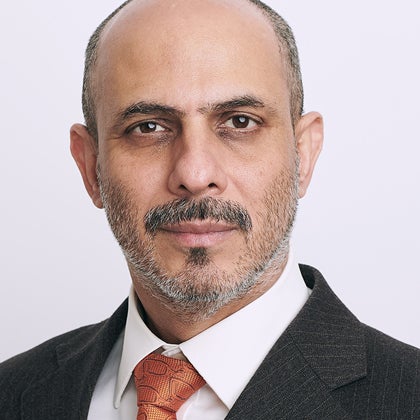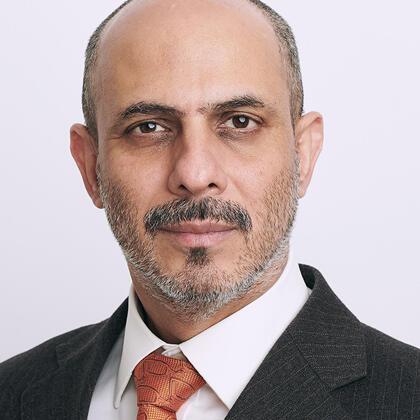Bypassing Banks Using Tech
Share
- Details
- Text
- Audio
- Downloads
- Extra Reading
Financial intermediaries, like banks, mutual funds and brokers, who connect investors to firms (who need finance), have existed for thousands of years. Because they control a scarce resource, information, these intermediaries are expensive. Platforms, like crowdfunding platforms (organised meeting places for investors to meet firms) offer an alternative. Today's technological revolution is all about the competition between centralized intermediaries and decentralized platforms.
This lecture discusses the technological innovations that are responsible for this competition: crypto, big data, and AI.
Any Further Questions? Podcast
Listen to our follow-up podcast with Professor Rau via the Audio tab or on Spotify & Apple
Download Text
Bypassing banks using tech
Raghavendra Rau, University of Cambridge
3rd October 2022
Introduction
My name is Raghavendra Rau and I'm a professor at the University of Cambridge. This is my first Gresham lecture. The topic of this year's series of lectures is going to be about how technology is affecting the world of finance.
In this introductory lecture I'm going to talk about how technology is allowing us to bypass formal financial intermediaries such as banks.
Let me start with a personal anecdote. As I mentioned my name is Raghavendra. I use a service called Google Voice which transcribes any voicemail left to me and sends it to me as an e-mail. This is an example of how Google understood how my name is pronounced. This is obviously a problem because if a computer doesn't understand who you are, that can create lots of problems in your life.
So, I decided to shorten my name to Raghu. But that had additional unforeseen consequences. So that is a personal example of how technology has affected my life.
So, what are we going to talk about in this series of lectures? Turns out that financial intermediaries have to deal with three types of information problems. First, they have to deal with imperfect information. Important information is when you do not have enough information. Second, we have to deal with asymmetric information. This is when your counterparty has more information than you do. Finally, they have to deal with behavioral biases. This is when people do not know what to do with information that they do have. In this series of lectures, I'm going to discuss how technology is changing the process of dealing with these problems. In particular, I'm going to talk about 3 developments - cryptography, big data, and artificial intelligence.
Solving Information Problems In Finance
Let us take an example of how a particular information technology affected finance. This was the invention of the telegraph by Samuel Morse in 1838. Technology prior to this date consisted of homing pigeons, the Pony express, visual telegraphs (a semaphore system) and railroads. What are the common characteristics of these technologies? Well, they were all slow, expensive, and inefficient.
So, what did the telegraph do? Well, it replaced an existing technology and it dramatically reduced costs. Initially it was supplied by an oligopoly consisting of a dozen or so firms and later on all telegraphic traffic was monopolised by a single firm, Western Union. And ultimately the telegraph was displaced by a new technology, the telephone.
But what effect did the telegraph have on finance? The biggest effect it had was that it allowed prices to be centralized. In 1846, wheat and corn prices in Buffalo lagged four days behind those in New York City. In 1848, the two markets were linked telegraphically, and prices were set simultaneously. Over the 19th century, hundreds of exchanges appeared and then disappeared across the country. Each one attempted to become dominant in a region or in a particular area. Only those in New York, Philadelphia, Boston, Chicago, and San Francisco remained important. You may recognise these exchanges. Five of the 12 Federal Reserve banks in America are based in these cities. And each of the city exchanges specialized in a particular area: New York specialized in stocks and bonds trading, Chicago specialized in options trading and so on.
But why was centralization so important? There were three major reasons. One, it increased liquidity. People are more willing to take positions in stocks and bonds if they know they can sell them easily. Because people congregated in the cities around these major exchanges, they could always be assured of finding a willing buyer or seller for the securities they wanted to sell or buy. Two, because of this increasing concentration in the marketplace, people began to be more willing to finance investment opportunities that may have arisen. This probably caused an increase in economic growth in the country. And finally new types of institutions arose to service these new clienteles of buyers and sellers. For example, in investment banks arose to help advise firms as to what securities to issue, what prices to issue them at, and how to sell them. Analysts were employed to analyse these new financial instruments and companies bringing their securities to the market. Brokerages developed to help people buy and sell shares of these new securities which were being issued.
And eventually the telegraph was replaced by the telephone. From 1850 to 1902, the cost of sending a 10-word telegram slowly dropped. But in 1902, after the invention of the telephone, the price of a telegram started going up again. Today you can still send a telegram which costs you about $10 for 250 words. I must say I've never done this myself. But the cost of a telephone call has been dropping over time. Today most of us have unlimited minutes on our phones and the marginal cost of a phone call is effectively zero.
But just improving the speed of communication is not enough to change the world of finance. Consider the loans described in the Hammurabi code (1754 BCE). There were about a hundred laws devoted to Property and commerce (debt, interest, and collateral). There were standards and limits for loan agreements to control usury. For example, a lender could charge at most 20% for a silver-based loan and 33.3% for a grain loan. Loans had to be certified – the lenders had to finalize the contract in front of witnesses. Loans were collateralized loans. Secured loans were common. Property in the form of land and houses - or even wives and children - could serve as collateral. Those in severe debt could enter indentured servitude to pay it off (McGrath, 2009).
What Does the Finance World Look Like Today?
Enormous amounts of money are wired daily around the world. Card payments are the standard form of payment in most of the developed world. Credit is granted with credit score models. Is any of this new?
Not really. International wire transfers are just a faster version of the letters of credit, used during the Crusades. Credit card payments are a more sophisticated version of store credit, present since stores were invented. Even modern credit score models resemble the credit grant approval process of yesteryear bankers very closely: they are using the same quantitative and qualitative variables.
What can we take away from this? In the past, technology reduced the cost of collecting and processing information. But it did not substantially change the business of making payments and loans nor did it eliminate the essential frictions involved, from adverse selection to moral hazard. A loan at the time of Hammurabi faced roughly the same moral hazard and adverse selection risk of a loan at the time of Bill Clinton. And much of the technological innovation that has found application in finance over the last 4000 years has favored incumbent institutions, who had the scale and resources to apply them first.
New Developments In Finance
Here are some of the major developments over the past decade:
-
- Central bank issued digital currencies (GovCoins)
- Decentralized finance (DeFi)
- The rise of tech platform firms
- Big data
- AI algorithms to understand who you are and predict your behavior
What technological innovations caused this change? I am going to argue that there are three major innovations:
-
- Cryptography
- Sensor technology (beginning with the introduction of the first smartphone, the iPhone, in 2007)
- AI
There are other ancillary technologies that you need such as disk space (the cloud) and cheap computing power, but I will not discuss them here.
How Do Financial Intermediaries Work?
Let’s start with the basic cycle of finance (Rau, 2017):
IMAGE
On the right-hand side of the figure, lie the investors (the market). They are offered a menu of contracts by the firm on the left-hand side. Some of these contracts involve fixed payments every year or every six months, a promise to return the face value at the end of a fixed term and a promise to pay off the instrument holders first in case of default. These contracts are debt contracts. Similarly, another set of contracts offers no guarantee of payments and the possibility of being paid last, if at all, if the firm defaults on its other contracts and goes bankrupt. Why would someone buy such a contract? It offers a possibility of large payments if the firm succeeds. To put this another way, it offers an opportunity to invest in the growth potential of the firm. We call these contracts equity. Other contracts (preferred shares, convertible bonds and so on) may also exist. Investors decide what these contracts are worth. They then buy the share and bond contracts and transfer the money to the firm. The firm then chooses to invest these inflows into either short-term (current) assets or long-term assets. It then retains a portion of these cash flows, pays out some as taxes and returns the rest to the investors as dividends or debt payments.
Where do financial intermediaries such as banks fit in? Banks perform at least four services:
- They match borrowers to lenders
- They transform maturities. Depositors deposit their money in banks on the understanding that they will be able to withdraw the money at any moment in time. In contrast, firms borrow money from banks on a long-term basis.
- Banks take risks in assessing creditworthiness of the borrowers. They either have to monitor these borrowers very closely if they plan to keep the loans on their books or they have to bundle these loans and sell them on to other buyers.
- Finally, banks provide liquidity to depositors.
Is this lucrative? Yes. This figure taken from a paper by Thomas Philippon published in the American Economic Review shows that the finance industry has quadrupled in the amount of assets it manages as a percentage of GDP over the past 130 years.
Why do banks make so much money? Typically, there are three ways:
- Banks match lenders (suppliers of finance) to borrowers (who need finance).
- Banks facilitate the payment process.
- Banks charge fees:
- For finding good investments (hedge funds, mutual funds)
- For advising firms (corporate finance)
Do they do a good job? Not so much. From another figure in the same paper by Philippon, we can see that the unit cost of financial intermediation has been relatively constant for the last 130 years at just under 2%. This implies that there have been no efficiency gains in banking since 1900.
But maybe banks are doing enough to satisfy their customers? Again no. In the top left corner of this figure, we can see that bank liquidity has dropped dramatically from just before to just after the financial crisis. Interest rates plunged over the same period (the top right-hand side). Simultaneously, he felt became very comfortable with doing things online (bottom right-hand side) and finally people began to dramatically lose trust in their banks (Bottom left-hand side).
IMAGE
The Edelman Trust carries out a series of surveys every year and measures the trust that people have in different industries. Almost every year, banks rank near the bottom of the trust tables.
Do You Need A Regulated Financial Intermediary Today?
Let's ask ourselves the question: Do we really need regulated financial intermediary today? If you need to take out a loan, you can go to a P2P lending site such as Lending Club or ArchOver. If you like to buy cryptocurrencies, Coinbase will operate a wallet for you. If you want to send cash overseas, Wise will do that for you much more cheaply than the banks can. If you want to buy a house, Sofi will give you a loan. If you need a wealth manager, Wealth Front and Betterment will help you manage your money. If you need car insurance, Root will help you insure your car. What about gadget insurance? Lemonade will help you do that. If you don't even know what banking alternative you need, Angel list gives you a list of literally thousands of banking alternatives.
All these developments mean that banks are in trouble. There is emerging competition from tech companies, telecom companies, and fintech start-ups. Customer expectations have evolved. The regulatory burden on banks has increased dramatically. And banks bear significant costs of legacy systems. Most of their systems were designed in the 1970s and the 1980s and upgrading their systems to today's technology is akin to repairing a jet engine while the plane is flying.
So, what is the biggest problem that banks have? Recall that we said that there were three types of informational problems that banks needed to deal with: Imperfect information, asymmetric information, and behavioural biases. Technology is making it easier to deal with all these three types of problems.
Let's start with asymmetric information. This is part of a general class of problems called principal-agent problems. A principal hires an agent do some work for him or her. If I were to hire a mechanic to repair my car, I would be the principal and the mechanic would be the agent. If a farmer hires a farmhand to work on her farm, the farmer would be the principal and the farmhand would be the agent. there are two principal classes of principal-agent problems. The first one is called adverse selection, sometimes called hidden information. the second is called moral hazard, sometimes called hidden action.
The adverse selection problem happens before the contract is signed. The moral hazard problem occurs after the contract is signed when your counterparty changes her behaviour after signing the contract. For example, in a bank, the banker is worried about whether the borrower will repay her loan. If the banker raises interest rates, it might actually have a perverse effect. The banker loses borrowers who are unwilling to pay high interest rates, effectively the safe borrowers. The adverse selection effect means that only unsafe borrowers, who don't mind high interest rates because they're not going to pay the loan back anyway, will come to this bank. The model has a problem means that the borrower changes his behaviour after borrowing from the bank. For example, he may go out to gamble instead of working on his project. to solve these two problems, the bank has to monitor the borrower extensively. This is expensive. That is why it is easier to borrow £100,000 from a bank than £100. With the first loan, the bank has a much larger margin to hire someone to monitor you. With the second loan, it does not.
So, let's take an example of a technology that solves the asymmetric information problem in a different way. Microfinance. Micro finance banks make tiny loans to borrowers, with average loan sizes of about a couple of $100. How do they do it? Well, they don't lend to individuals. They lend to groups of people with the proviso that if anyone person in the group fails to pay back the loan, the entire group gets cut off. Who are group members? Your neighbours. The bank knows that your neighbours will do a much better job of monitoring you then the bank can. This was such an innovative form of financing that the originator Grameen bank was given a Nobel Peace Prize in.
But now let's take an example of how tech can reduce these costs differently. Tala is a loan provider in countries ranging from Kenya to India. You apply for a loan from Tala over your smartphone. The application form is relatively short, consisting of just uploading some form of ID and answering a few questions. But during the time you are applying for a loan, Tala is checking lots of information about your location and your contacts to infer additional information about you. For example, if you have a lot of contacts to whom you talk to on a regular basis, Tala knows that you have a broad social network who you might be able to depend on to pay back the loan. By checking how you spell your contacts on your contact list, Tala infers how reliable you are. Using both the first and last name and capitalising the first letter of the first and last name in your contact list, tells Tala that you're much more conscientious than someone who just uses a first name for their contacts.
Similarly, consider a car loan. car insurers are particularly subject to the adverse selection problem. They want good drivers, but bad drivers are more likely to need insurance than good drivers. Root insurance asks you to take a test drive when you're applying for car insurance. During the period you're driving, it is monitoring everything about you. How fast you drive, what road you drive on, how do you go around corners, do you go through red lights? Monitoring your driving allows Root to quote your competitive price for insurance if you're a good driver. If you are a bad driver, it tells you to go elsewhere. This allows Root to solve its adverse selection problem.
What about moral hazard? If you have gadget insurance, you might be tempted to claim too much when your gadget goes bad. Even if it is your fault, you have an incentive to still make a claim. Lemonade tries to solve this problem by charging a flat fee for covering your gadgets and if you do not make a claim, it pays the extra money to causes that you care about. So, in effect, Lemonade is telling you that, if you make a claim, you're actually taking money away from your own favourite cause. This might deter you from making too many claims.
Some companies invert the mall hazard problem. For example, Coventry First, buys life insurance policies from you. Usually, health insurers want healthier people as customers. Since Coventry First is actually buying your life insurance policy from you, it hopes for unhealthier customers. It hopes to cash in when its customers die. The moral hazard problem here is that its customers will use the money from the life insurance policy sale to keep themselves healthy and alive. But it is tough for Coventry First to stop that from happening.
There are other areas where banks are being bypassed by tech. Take foreign exchange. This is a big earner for banks. Wise claims that its money transfers are six times cheaper than banks. how does it do this? Well, it pools sums of money in different countries. If I want to send pounds to Euros, it finds someone who wants to send Euros to pounds. My money goes to the person within the UK who wants pounds. Did someone else’s money send to my recipient who wants Euros. Money never crosses borders, and within borders money transfers are essentially free.
Many companies are completely avoiding banks when raising money. Some companies issue bonds directly to their customers. These are called direct issue bonds. In one example, an unlisted, unrated closely held industrial chemicals producer located in a heavily industrialised area of Germany with €600 million turnover and 3000 employees with operations in 20 countries decided that it was never going to use banks again. The company decided to issue bonds directly to customers in its area. Interestingly, many of the investors turned into evangelical investors, promoting bonds at this company to their friends and family. This created a virtuous circle of financing, all without using any banks at all.
But these forms of financing are just the beginning. There are alternative methods of raising finance including crowdfunding, peer-to-peer lending, and direct issue bonds. There are alternative wealth management systems such as advisory services (robo advisors) and traded life insurance settlements (death bonds). There are alternative payment systems. These include mobile payment systems such as MPesa, foreign exchange remittances, alternatives to Visa, Swift and interbank transfers, and of course Bitcoin and distributed Ledger systems.
Why are these technologies taking off now? One reason is that the cost to launch a tech start-up has dropped dramatically since the early 2000s. I am an academic director at the Cambridge Centre for Alternative Finance. This was established in January 2015 at the University of Cambridge Judge Business School. The centre is dedicated to the study of new financial instruments, channels and systems that emerge outside the traditional banking and capital market system. We have four major research themes. We study alternative instruments and channels, alternative credit analytics using new forms of data, alternative payment systems, and we study how regulation is changing to deal with all these changes in technology. All our reports are free and published on our website. To keep abreast of these ways in which tech is affecting the world of finance, please go to the CCAF website at https://www.jbs.cam.ac.uk/faculty-research/centres/alternative-finance/.
© Professor Rau 2022
References and Further Reading
McGrath. Jane “What's so important about the Code of Hammurabi?” 17 February 2009 HowStuffWorks.com (available at https://history.howstuffworks.com/world-history/code-of-hammurabi.htm).
Philippon, Thomas, 2015, Has the US finance industry become less efficient? On the theory and measurement of financial intermediation, American Economic Review 105, 1408-38.
Rau, Raghavendra, “A short introduction to corporate finance”, 2017, Cambridge University Press.
References and Further Reading
McGrath. Jane “What's so important about the Code of Hammurabi?” 17 February 2009 HowStuffWorks.com (available at https://history.howstuffworks.com/world-history/code-of-hammurabi.htm).
Philippon, Thomas, 2015, Has the US finance industry become less efficient? On the theory and measurement of financial intermediation, American Economic Review 105, 1408-38.
Rau, Raghavendra, “A short introduction to corporate finance”, 2017, Cambridge University Press.
Part of:
This event was on Mon, 03 Oct 2022
Support Gresham
Gresham College has offered an outstanding education to the public free of charge for over 400 years. Today, Gresham College plays an important role in fostering a love of learning and a greater understanding of ourselves and the world around us. Your donation will help to widen our reach and to broaden our audience, allowing more people to benefit from a high-quality education from some of the brightest minds.


 Login
Login







